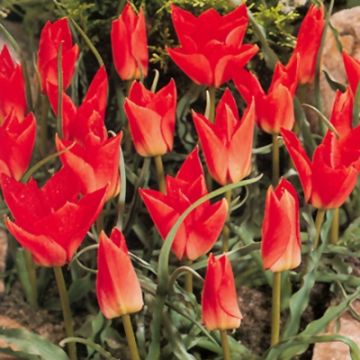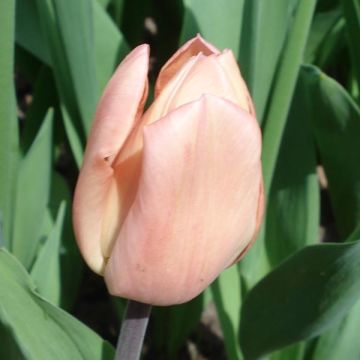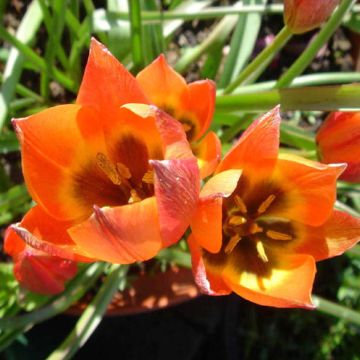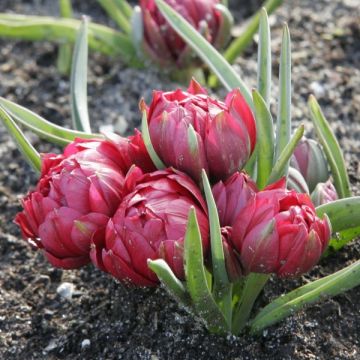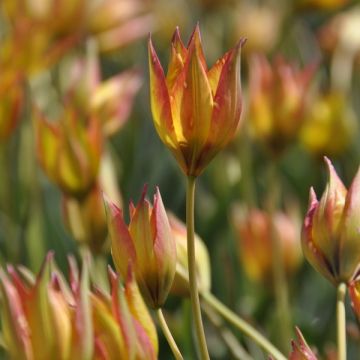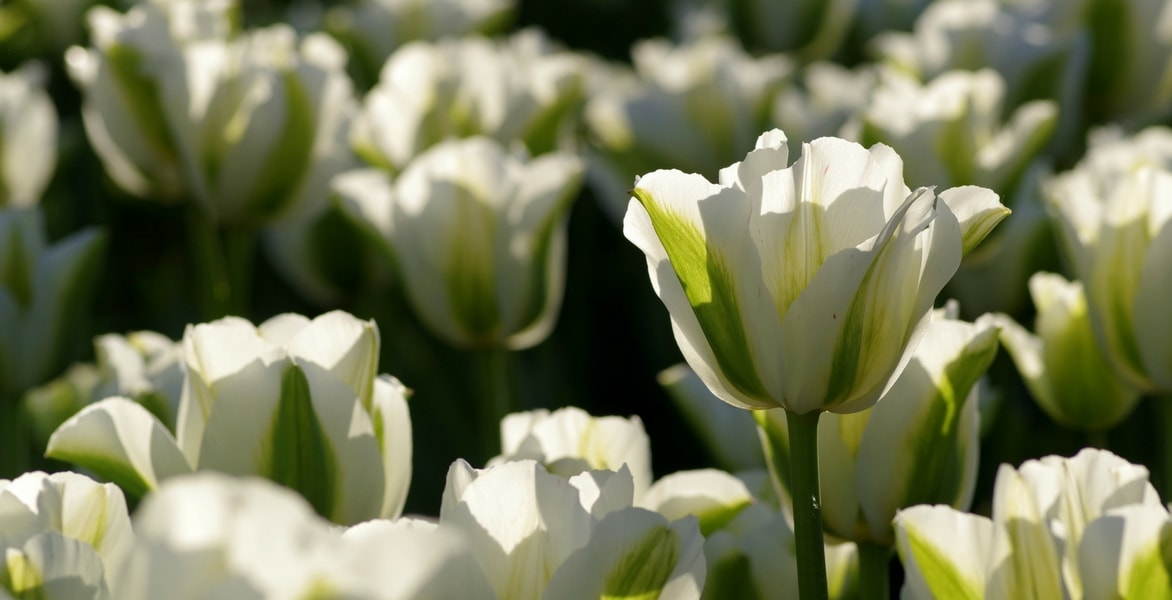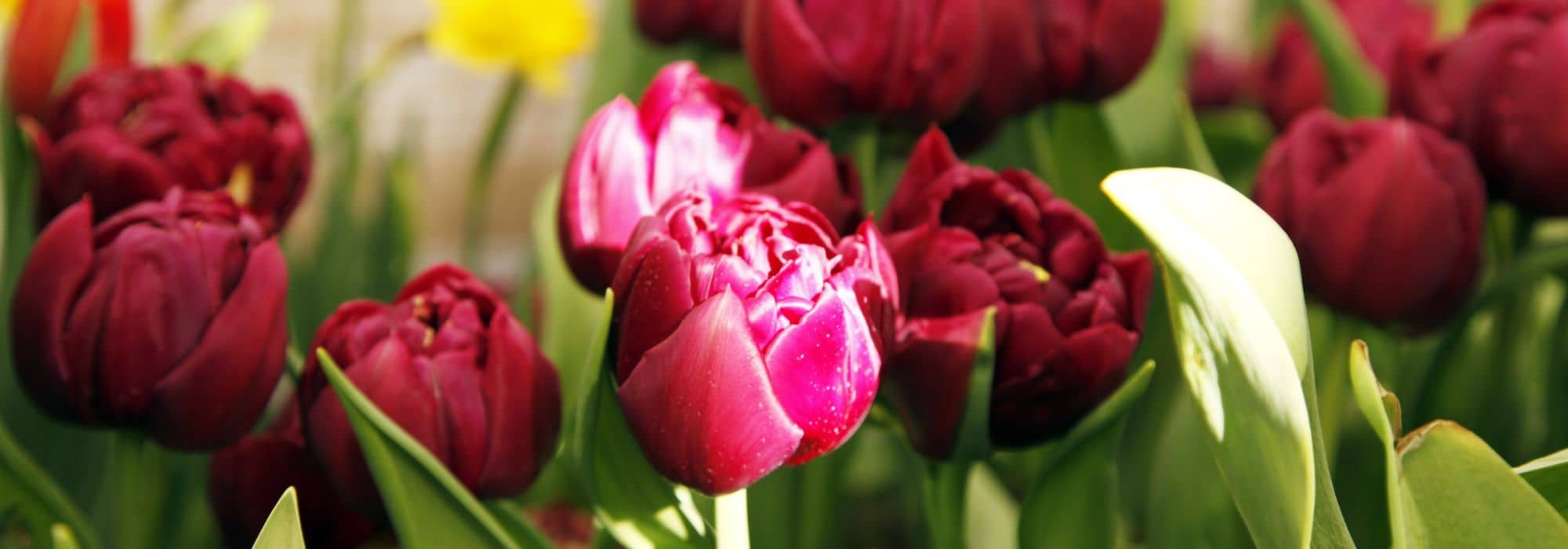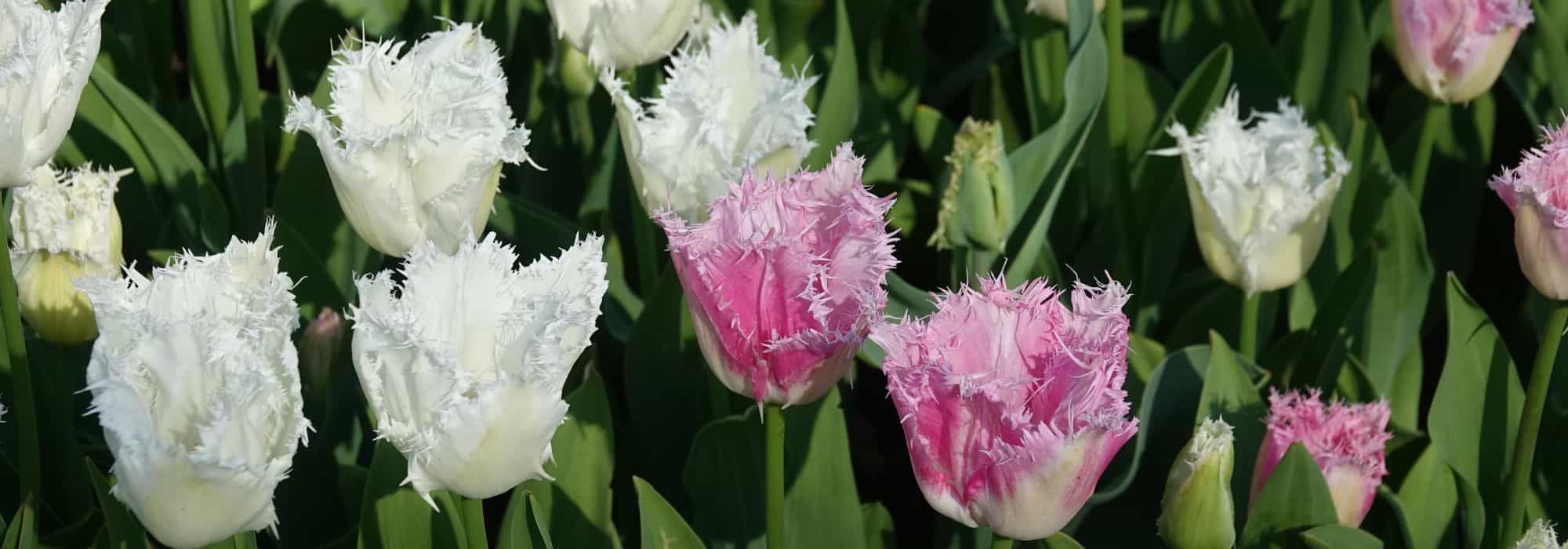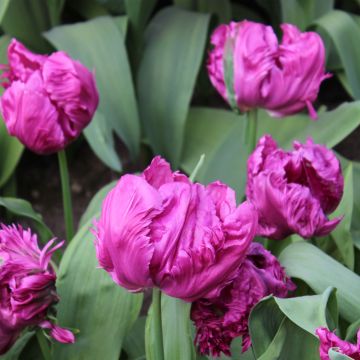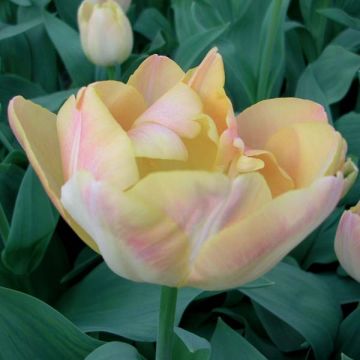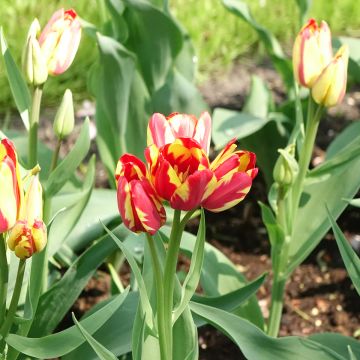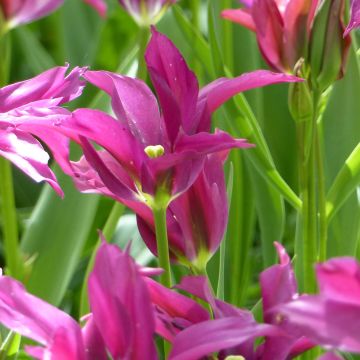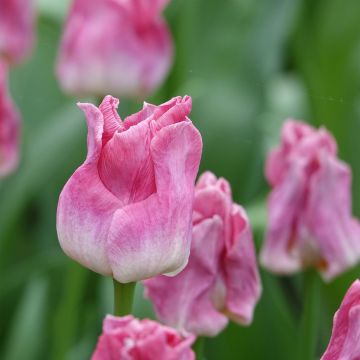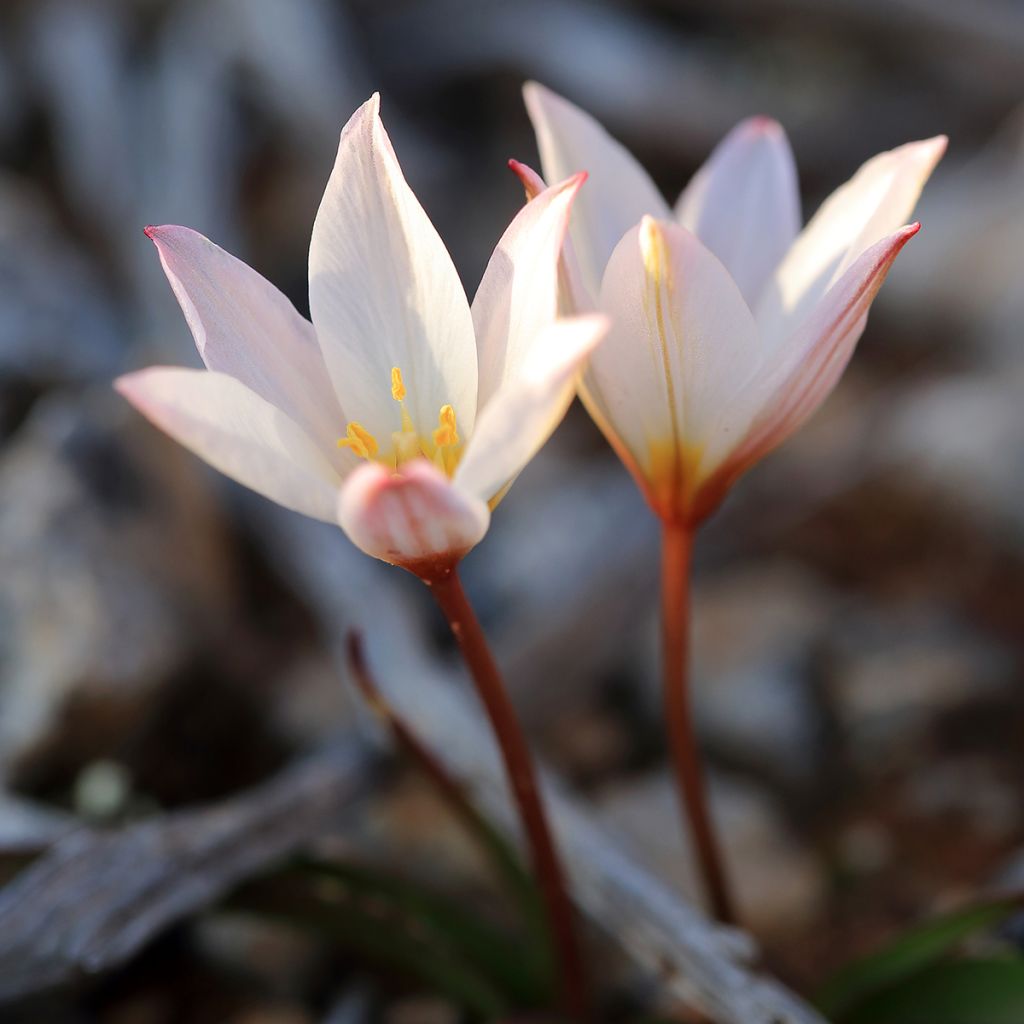

Tulipa cretica Hilde
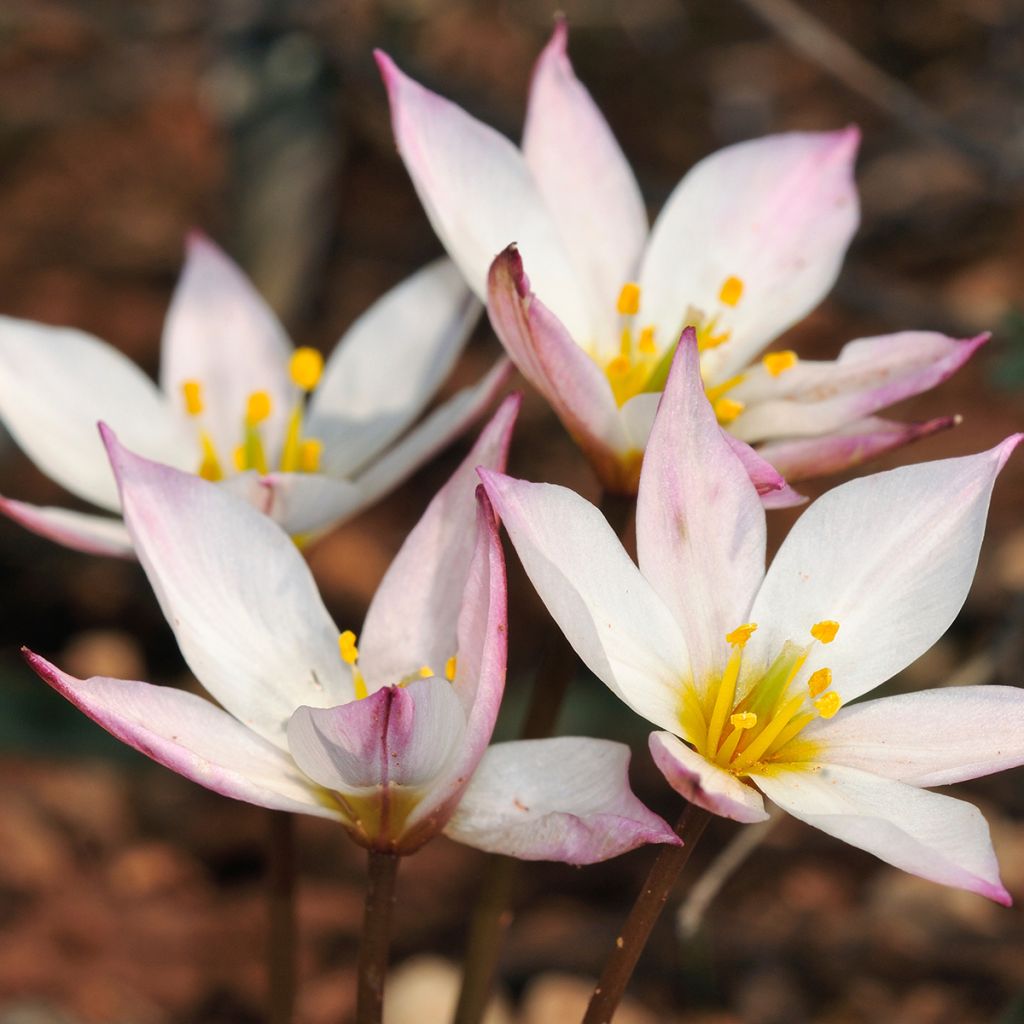

Tulipa cretica Hilde
Tulipa cretica Hilde
Tulipa cretica Hilde
Tulip
All the bulbs sprouted and the flowers were very, very beautiful—I'm extremely satisfied with them!
Gabryel, 15/06/2025
Special offer!
Receive a €20 voucher for any order over €90 (excluding delivery costs, credit notes, and plastic-free options)!
1- Add your favorite plants to your cart.
2- Once you have reached €90, confirm your order (you can even choose the delivery date!).
3- As soon as your order is shipped, you will receive an email containing your voucher code, valid for 3 months (90 days).
Your voucher is unique and can only be used once, for any order with a minimum value of €20, excluding delivery costs.
Can be combined with other current offers, non-divisible and non-refundable.
Why not try an alternative variety in stock?
View all →This plant carries a 6 months recovery warranty
More information
We guarantee the quality of our plants for a full growing cycle, and will replace at our expense any plant that fails to recover under normal climatic and planting conditions.

Does this plant fit my garden?
Set up your Plantfit profile →
Description
The 'Hilde' Tulip is a beautiful selection of the Crete tulip (Tulipa cretica), a delicate botanical species that blooms in April on the rocks of the Cretan mountains. It is a small bulbous plant that is quite charming, but also hardy in well-drained soil. It naturalises, forming lovely little clusters of flowers over time. In this tulip, each bulb produces up to 3 flowering stems of reddish-brown colour, each bearing a delicate small flower with white petals striped with dark pink and a yellow throat. A gem to admire up close, in a rock garden or even in a pot!
Tulipa cretica is endemic to Crete where it grows in large colonies. In the wild, it grows particularly on the slopes of Mount Ida, the highest peak on the island. It can be found between 500 and 2200 metres (1640 and 7218 feet) above sea level. The 'Hilde' selection is more colourful than the type. Its bulb is smaller compared to those of large-flowered hybrids. It develops long gutter-shaped leaves, more or less twisted, of dark green-gray colour with red-brown edges from late winter onwards. Flowering occurs in March-April, earlier or later depending on the climate, at the top of reddish-brown stems that rarely exceed 15-20 cm (6-8in) in height, depending on the soil fertility. Each bulb produces up to 3 flowering stems. At the top of each stem, a small flower blooms, opening up like a star to reveal a wide yellow centre and beautiful golden stamens. The petals are almost white on the inside, but their reverse side is finely striated and streaked with reddish-pink on a pastel pink background. Their base is tinged with bright yellow. The flowers, measuring 3 to 4 cm (1 to 2in) in diameter, consist of 6 pointed tepals. The foliage dries up and disappears in late spring or early summer, while the bulb enters a resting period, preferably in dry soil. This tulip spreads by producing bulblets.
The 'Hilde' cretica tulips naturalise easily in well-drained soil and form beautiful colonies over time. To achieve a homogeneous cluster, we recommend planting the bulbs in small groups of 5 to 10. They are delightful in a rock garden or along the edge of a gravel bed, and will precede the growth and flowering of small bushes or perennials that will fill the gap they leave from the beginning of summer. For example, you can combine them with spring crocuses and Greek anemones. To complete the scene, plant some thymes, small rock garden euphorbias, and houseleeks.
Tulipa cretica Hilde in pictures


Plant habit
Flowering
Foliage
Botanical data
Tulipa
cretica
Hilde
Liliaceae
Tulip
Southern Europe
Other Botanical Tulips
View all →Planting and care
The Cretan 'Hilde' tulip is a hardy plant in well-drained soil, when only slightly moist in winter. Plant the bulbs in autumn, from September to December, at a depth of 6-7 cm (2-3in), spacing them 10 cm (4in) apart. The planting should be done in ordinary soil, slightly acidic, neutral, or slightly alkaline, well-worked and well-drained, even stony. A raised bed or rockery will provide favourable conditions. A mixture of garden soil, coarse sand or gravel, and compost will be suitable. Never add manure or poorly decomposed compost to the planting soil, as this could cause the bulbs to rot. The 'Hilde' tulip tolerates dry summers perfectly and can withstand quite cold winters. Plant it in a sunny location.
Tip for Flowering Carpets:
You can create beautiful flowering spaces around the house, in flower beds, around trees, or in wild spaces. It is an economical and sustainable solution, provided you respect a few principles:
1) This is a planting to leave in place.
2) Choose the varieties carefully according to the situation.
3) A period of rest is essential after flowering for the bulbs to regenerate. Let the foliage turn yellow and dry before cutting it.
4) Organic fertiliser should be spread once a year in autumn.
Planting period
Intended location
Care
Planting & care advice
-
, onOrder confirmed
Reply from on Promesse de fleurs
Similar products
Haven't found what you were looking for?
Hardiness is the lowest winter temperature a plant can endure without suffering serious damage or even dying. However, hardiness is affected by location (a sheltered area, such as a patio), protection (winter cover) and soil type (hardiness is improved by well-drained soil).

Photo Sharing Terms & Conditions
In order to encourage gardeners to interact and share their experiences, Promesse de fleurs offers various media enabling content to be uploaded onto its Site - in particular via the ‘Photo sharing’ module.
The User agrees to refrain from:
- Posting any content that is illegal, prejudicial, insulting, racist, inciteful to hatred, revisionist, contrary to public decency, that infringes on privacy or on the privacy rights of third parties, in particular the publicity rights of persons and goods, intellectual property rights, or the right to privacy.
- Submitting content on behalf of a third party;
- Impersonate the identity of a third party and/or publish any personal information about a third party;
In general, the User undertakes to refrain from any unethical behaviour.
All Content (in particular text, comments, files, images, photos, videos, creative works, etc.), which may be subject to property or intellectual property rights, image or other private rights, shall remain the property of the User, subject to the limited rights granted by the terms of the licence granted by Promesse de fleurs as stated below. Users are at liberty to publish or not to publish such Content on the Site, notably via the ‘Photo Sharing’ facility, and accept that this Content shall be made public and freely accessible, notably on the Internet.
Users further acknowledge, undertake to have ,and guarantee that they hold all necessary rights and permissions to publish such material on the Site, in particular with regard to the legislation in force pertaining to any privacy, property, intellectual property, image, or contractual rights, or rights of any other nature. By publishing such Content on the Site, Users acknowledge accepting full liability as publishers of the Content within the meaning of the law, and grant Promesse de fleurs, free of charge, an inclusive, worldwide licence for the said Content for the entire duration of its publication, including all reproduction, representation, up/downloading, displaying, performing, transmission, and storage rights.
Users also grant permission for their name to be linked to the Content and accept that this link may not always be made available.
By engaging in posting material, Users consent to their Content becoming automatically accessible on the Internet, in particular on other sites and/or blogs and/or web pages of the Promesse de fleurs site, including in particular social pages and the Promesse de fleurs catalogue.
Users may secure the removal of entrusted content free of charge by issuing a simple request via our contact form.
The flowering period indicated on our website applies to countries and regions located in USDA zone 8 (France, the United Kingdom, Ireland, the Netherlands, etc.)
It will vary according to where you live:
- In zones 9 to 10 (Italy, Spain, Greece, etc.), flowering will occur about 2 to 4 weeks earlier.
- In zones 6 to 7 (Germany, Poland, Slovenia, and lower mountainous regions), flowering will be delayed by 2 to 3 weeks.
- In zone 5 (Central Europe, Scandinavia), blooming will be delayed by 3 to 5 weeks.
In temperate climates, pruning of spring-flowering shrubs (forsythia, spireas, etc.) should be done just after flowering.
Pruning of summer-flowering shrubs (Indian Lilac, Perovskia, etc.) can be done in winter or spring.
In cold regions as well as with frost-sensitive plants, avoid pruning too early when severe frosts may still occur.
The planting period indicated on our website applies to countries and regions located in USDA zone 8 (France, United Kingdom, Ireland, Netherlands).
It will vary according to where you live:
- In Mediterranean zones (Marseille, Madrid, Milan, etc.), autumn and winter are the best planting periods.
- In continental zones (Strasbourg, Munich, Vienna, etc.), delay planting by 2 to 3 weeks in spring and bring it forward by 2 to 4 weeks in autumn.
- In mountainous regions (the Alps, Pyrenees, Carpathians, etc.), it is best to plant in late spring (May-June) or late summer (August-September).
The harvesting period indicated on our website applies to countries and regions in USDA zone 8 (France, England, Ireland, the Netherlands).
In colder areas (Scandinavia, Poland, Austria...) fruit and vegetable harvests are likely to be delayed by 3-4 weeks.
In warmer areas (Italy, Spain, Greece, etc.), harvesting will probably take place earlier, depending on weather conditions.
The sowing periods indicated on our website apply to countries and regions within USDA Zone 8 (France, UK, Ireland, Netherlands).
In colder areas (Scandinavia, Poland, Austria...), delay any outdoor sowing by 3-4 weeks, or sow under glass.
In warmer climes (Italy, Spain, Greece, etc.), bring outdoor sowing forward by a few weeks.































